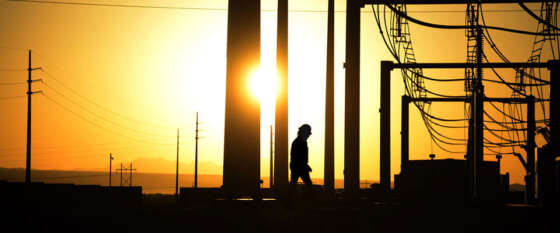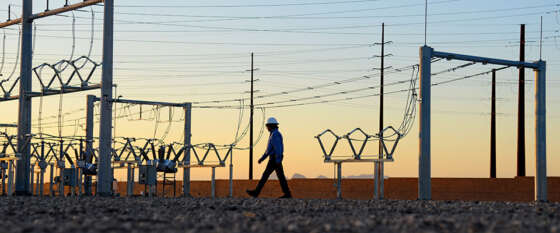
Large Energy Users Support Affordable Energy for Everyone
As our community grows and new energy-intensive projects emerge, some customers have asked: Will large industrial users like data centers drive up our rates?
The short answer is no. The longer answer is that, over time, they actually help keep rates more affordable for everyone.
Large industrial customers pay rates designed to recover the full cost of serving them, including infrastructure and energy resources. Their energy use is typically steady and predictable, making them easier to serve. And because most of their usage occurs during off-peak periods, it helps pay for infrastructure we already have in place.
Our rates are designed to recover a certain amount of money from all customers. Our usage-based rates are determined by essentially dividing that amount by our projected energy sales. So, if more sales are expected – like to a big data center – that calculation results in lower usage-based rates.
This works out even better because our local grid costs are largely fixed – they don’t vary much with energy usage. This is particularly true for industrial customers who use a bunch of energy at one location. Even though they pay lower usage-based rates because they’re buying in bulk, they still end up paying more for a system that serves everyone.
Project Specific Protections
TEP also takes targeted measures to ensure that large new users won’t create negative impacts for our existing customers.
TEP’s energy supply agreement for a planned data center southeast of Tucson includes strong customer protections to ensure the project pays its own way and doesn’t compromise reliable, affordable service for the rest of our community. The agreement was approved by the Arizona Corporation Commission (ACC) in December 2025 in a transparent public process.
The data center will pay the full, ACC-approved rate for TEP’s largest customers — with no discounts or financial incentives — ensuring residential and retail customers do not subsidize the project. It will be limited to 286 megawatts (MW) of capacity, which TEP can support with existing resources and clean energy projects already underway. There are also early termination protections and minimum monthly bills, even if its actual energy use falls short — guaranteeing revenue that more than covers the cost of service.
It’s also important to note that TEP’s pending request for new rates is unrelated to any new data center project. The increase was driven by $1.7 billion in grid upgrades completed since 2021 — historic investments, not future projects. While headlines may have conflated the two, the facts are clear: any new data centers will pay for their own grid connection costs, and their consistent energy use will help support affordability for all customers over time.



